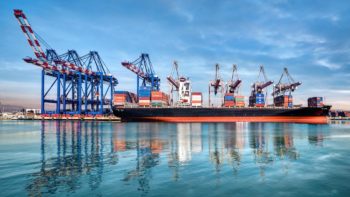
The introduction of new environmental regulations is leading the shipping industry to look for ways of reducing its emissions of harmful gases. This week we focus on two separate but related issues: the way in which vessels are powered, and the type of fuel that they use. New technologies are being adopted, with certain ship types leading the way…
Electric therapy
The majority (96%) of active merchant vessels are powered by mechanical systems in which a form of fuel oil powers a main engine (usually a 2 or 4-stroke diesel) which is connected to the propeller. Most other vessels are “diesel-electric”, in which the power generated by the (4-stroke) main engine(s) is converted to electricity before being transferred to propeller(s) or thruster(s) via electric motors.
By optimising the loading of the engines, diesel-electric systems can lower fuel consumption and emissions. These systems are well established in sectors such as offshore, tugs and passenger, where manoeuvrability, variation in power demand and engine noise are important considerations. For larger cargo vessels, where demand for power is generally higher and more consistent, conventional mechanical systems remain more efficient and cost-effective. Our Graph of the Week shows that against a backdrop of reduced contracting in the larger cargo sectors, electrically-driven ships have assumed a greater share of the newbuilding market, accounting for 22% of reported newbuilding contracts so far this year.
Battery charged
The next step for electric power may be more widespread adoption of batteries in main propulsion systems. There are 22 vessels in service and 14 on order that use batteries, mostly alongside either conventional diesel or dual-fuel generating sets. As well as reducing emissions when using battery power, these can enhance efficiency by optimising engine loads and transferring surplus power to or from the batteries as required. For smaller ferries intended for short routes, all-electric propulsion systems are feasible.
Gas treatment
LNG has been identified as a cleaner fuel capable of reducing vessel emissions in line with new regulations. Clarksons Research’s World Fleet Register currently identifies 542 merchant ships in the fleet and on order capable of using LNG fuel. 351 of these are LNG carriers, which can use cargo boil-off to fuel a choice of turbine, dual-fuel diesel electric or dual-fuel 2-stroke main engines. In other sectors LNG fuel has taken longer to gain market share, but there are signs that where ship designs and the supply of bunkers allow, it is becoming more popular. Out of the 130 contracts recorded so far in 2017, 21 are for vessels capable of using LNG fuel. These include 4 Aframax tankers, the largest vessels other than LNG carriers to adopt dual-fuel 2-stroke engines.
More efficient power systems and cleaner fuels are two examples of how the shipping industry is responding to the challenges set by new environmental regulations. Alongside other developments in vessel design and operating practices, shipping is steering towards a more efficient and cleaner future. Have a nice day!
Source: Clarksons.
Copyright Ships & Ports Ltd. Permission to use quotations from this article is granted subject to appropriate credit given to www.shipsandports.com.ng as the source.
